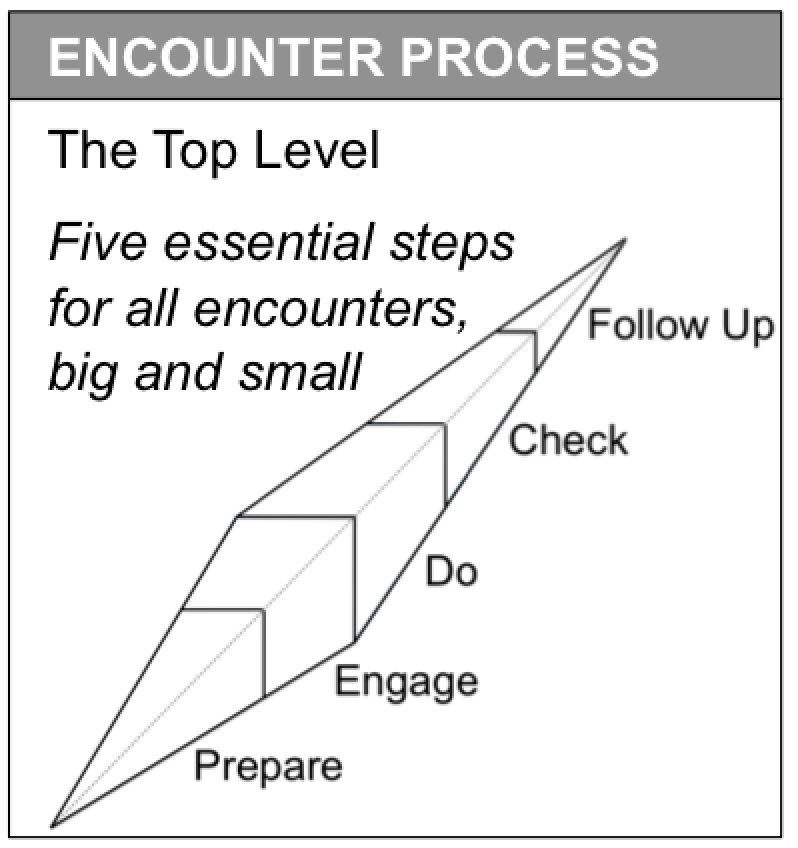 Understanding and using the Encounter Process is a prerequisite to
consistently achieving effective client meetings.
The Prepare, Engage, Do, Check, Follow Up structure gives us a high-level
view of essential meeting steps, and it is important that none of these are
skipped.
The Prepare step is always beneficial, even when it turns out to be
impossible to implement the plans that result from it.
The Engage step describes initial contact with my client and the business
of getting the encounter on track. Both these points must be attended to at
every meeting, whether participants know each other and have already prepared
the encounter or not.
The Do step is the core of the encounter: Discover, Inform and Negotiate.
These three components of the Do step are described in detail in the Chapters 7
through to 10.
The Check step is used to check for completeness of the encounter. It is
necessary to ensure that all participants are OK with the encounter outcome and
that the results of the work are reviewed. All open issues must either be
closed, or noted for future closure (next steps).
The Follow Up step completes the work started during the Check phase by
recording agreements made in that phase and completing next steps in a timely
way, where possible. The work of following up from the encounter inevitably
launches new ones, making the Encounter Process recursive.
Understanding and using the Encounter Process is a prerequisite to
consistently achieving effective client meetings.
The Prepare, Engage, Do, Check, Follow Up structure gives us a high-level
view of essential meeting steps, and it is important that none of these are
skipped.
The Prepare step is always beneficial, even when it turns out to be
impossible to implement the plans that result from it.
The Engage step describes initial contact with my client and the business
of getting the encounter on track. Both these points must be attended to at
every meeting, whether participants know each other and have already prepared
the encounter or not.
The Do step is the core of the encounter: Discover, Inform and Negotiate.
These three components of the Do step are described in detail in the Chapters 7
through to 10.
The Check step is used to check for completeness of the encounter. It is
necessary to ensure that all participants are OK with the encounter outcome and
that the results of the work are reviewed. All open issues must either be
closed, or noted for future closure (next steps).
The Follow Up step completes the work started during the Check phase by
recording agreements made in that phase and completing next steps in a timely
way, where possible. The work of following up from the encounter inevitably
launches new ones, making the Encounter Process recursive.
More about The Encounter Process:
Get the Client Encounters of the Technical Kind book!

